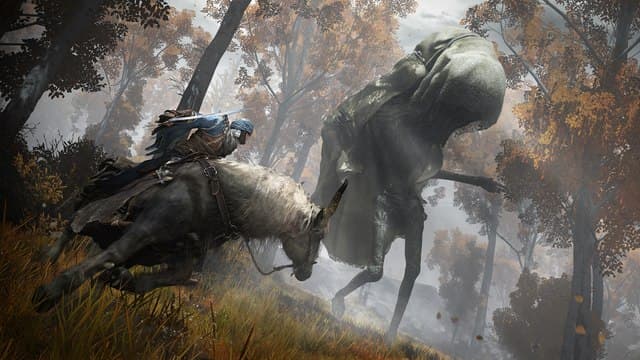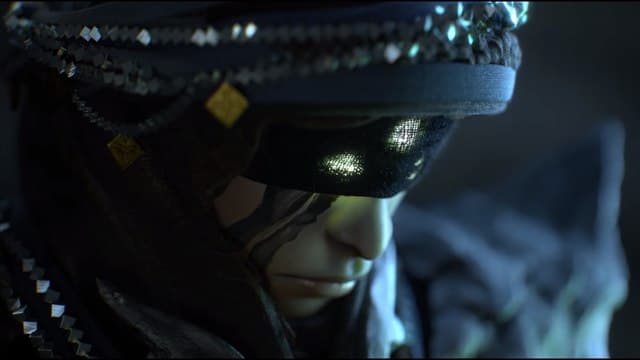Of all of the various epithets hurled around by right-wing internet users, “NPC” is the least immediately obvious in its meaning. “Cuck” is pretty straightforward, as is “SJW.” But what does it mean to call someone an NPC? David Futrelle describes the term in this context as “a sort of all-purpose replacement for formerly ubiquitous anti-SJW putdowns like ‘cuck’ and ‘soyboy,’ suggesting that everyone who doesn’t agree with them is a mindless, even soulless, robot, akin to a videogame Non-Player Character who can only respond to stimulus with a small number of preprogrammed lines of dialogue.”
By calling someone an NPC, one implicitly positions oneself as the player character, the protagonist. This designates the person using the term to be a “player character,” a protagonist of the game. In other words, they’re quite literally the center of the world. Given how many games set the player up as a chosen hero, it’s not much of a jump to assuming that everyone else — or at least those who disagree with you — are simply obstacles or annoyances.
More Like This:
- How Enderal Plays With Player Expectations
- 5 Games Where You’re Actually The Villain
- How Rune Factory 4 Got Gendered Avatars Right

Cannon Fodder and Quest Dispensers
On one extreme, in many first-person shooters, every character you encounter exists to be killed. But the common question about whether these games cause violence seems a little misdirected. It might be more interesting to ask whether games as a whole subtly normalize the dehumanization of others. Because this process isn’t limited to obvious cases like FPS titles. In role-playing games, NPCs often consist primarily of vendors and quest-givers. They provide goals for the player or help her accomplish them. They may have personalities and preferences, but in nearly all cases these are subsumed to the player’s needs and desires. The player character’s perspective becomes centered as the only legitimate perspective on the game world and its inhabitants.
Sometimes, the functional role of NPCs can we woven into the narrative arc of a game in a way that feels natural. The Legend of Zelda: Breath of the Wild does incentivize violence against certain “monster” NPCs such as Bokoblins, who the player can also watch enjoying food and dancing. But within the same game, the characters such as Zelda, the Champions’ ghosts, and the townspeople provide a reason for Link to do everything he does. One lovely side mission features Link building the foundations of a new town, bringing people and creatures of the different fantasy races to join together and form a new community. As each new house gets built in the village, a new instrument comes into the soundtrack, emphasizing the specialness that each person brings to the space.
Conversely, the creators of the Harvest Moon games designed a world in which the townspeople would have gone about their lives quite happily even if you had never showed up. This inverts the JRPG conceit of the player character as the hero at the center of the universe. In Animal Crossing, the townspeople give the games a texture and richness, as you might encounter one on a chance midnight walk, or another may fuss over how much they’ve missed you since you last played.

Expanding Possibilities
Independent games are often able to tell a wider range of stories than their blockbuster counterparts, and this includes their treatment of NPCs. In Night in the Woods, each character has a story to tell, even if sometimes they don’t want to tell it to the protagonist Mae. Characters like Bea and Gregg, each with personality traits that make them sometimes difficult to deal with, have complex motivations and inner lives.
And of course, it’s impossible to talk about these issues without mentioning Undertale, the game that made the question of whether to attack or befriend monster NPCs a central mechanic. The mechanic goes so deep in Undertale that runs of the game in which you kill each monster are called “genocide runs.” These runs constrict the game experience because you lose opportunities to develop relationships with other characters as you off them one by one and gain a reputation as a killer. On the opposite end, “pacifist runs” crack the story of the game wide open. There is no one true route in Undertale, but the pacifist run offers up elements of story and gameplay that the player would miss if playing on the autopilot setting of traditional RPGs.

Imagining Communities
Developers are continually working on new ways to create and involve non-player characters in games. Talks at the Game Developers’ Conference on the topic have included The Lives of Others: How NPCs Can Increase Player Empathy, and Forget Protagonists: Writing NPCs with Agency for 80 Days and Beyond. The titles alone shed a light on alternative ways to see NPCs, which in turn can reflect how we see others in our own lives.
What does one do with one’s time on Earth? How does one see, and treat, those around them? The best games bring these questions to light. Humans are relationship-focused animals, but our culture often emphasizes individuality over all else. We are all the protagonists of our own lives, our own stories. But what if we could step away from that framing for a minute through a game?
Link has a responsibility to Zelda in Breath of the Wild, who’s holding off Ganon at a standstill in Hyrule Castle with her sealing magic. Similarly, we all have a responsibility to those around us — to help each other however we can. Like Link and Zelda, in the best situations our abilities complement one another’s skills. And like Link who calls upon the help of Zelda and the four ghost Champions, we all sometimes need the assistance of others to do our work, be that political organizing, artwork, or anything else.
The myth of the solo adventurer is just that. Batman relies on a surrogate family he’s gathered around him: Alfred, Robin, Nightwing, Oracle. Link’s work wouldn’t matter at all if there was no one he and Zelda were saving from Ganon. Limited by our own senses and thoughts, the best stories of all mediums illuminate how deeply interconnected we all are — and the best games can help us explore these connections in radical new ways.


